Outforia Quicktake: Key Takeaways
- Ravens, being members of Corvidae family, are capable of mimicking approximately a 100 words much like parrots. This ability is built on their unique brain structure, sharing characteristics with human brains.
- Ravens lack larynx, lips, and teeth similar to humans, but they utilize their syrinx, a unique organ in their chest, to create sounds and mimic words.
- In the wild, ravens are capable of producing 33 different vocalizations, while those in captivity can mimic more complex sounds like car alarms, sirens, and even human speech.
- Ravens are not only capable of talking, but they are also extremely intelligent, reaching the cognitive ability comparable to a 7-year-old child.
- Their intelligence manifests in problem-solving skills and tactical deceits, such as hiding food from other birds. They also possess high cognitive abilities that rival great apes and young children.
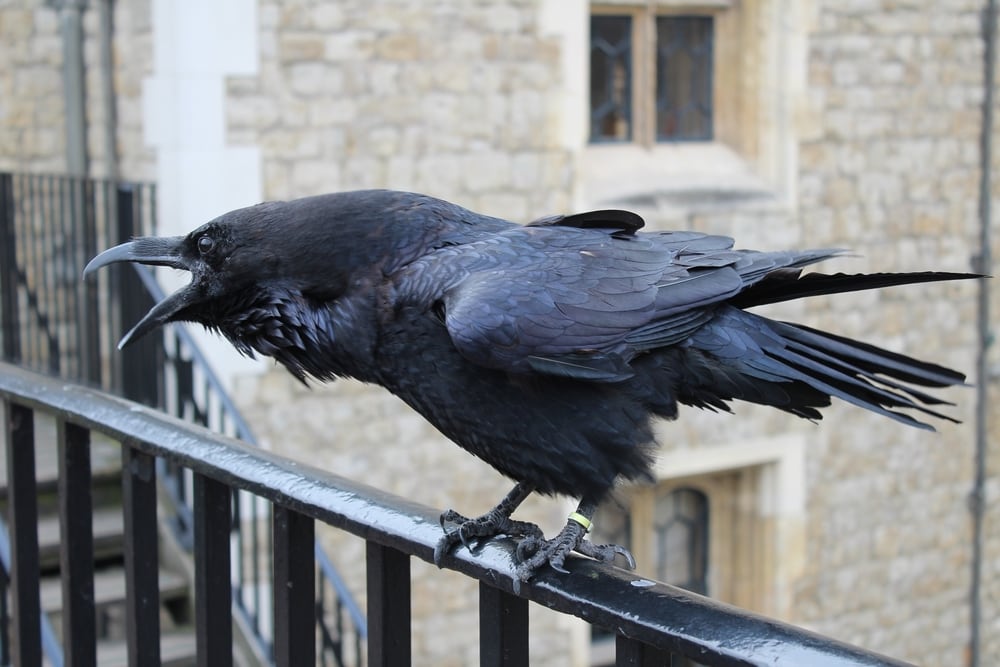
Ravens are able to learn and say around 100 words. They are similar to parrots in that they have a brain that is wired like a human brain. This enables them to talk and mimic phrases.
As you know, ravens are jet-black corvids. For thousands of years, they have been the subject of folklore and superstition in cultures across the world. In more recent times, they have inspired writers and artists to create gothic masterpieces.
Ravens are also very intelligent and great at problem-solving. As a member of the Corvid family of birds, they rank as one of the most intelligent bird species. They can also talk.
Want to find out more about this dark and brooding corvid? Read on!
Raven Classification
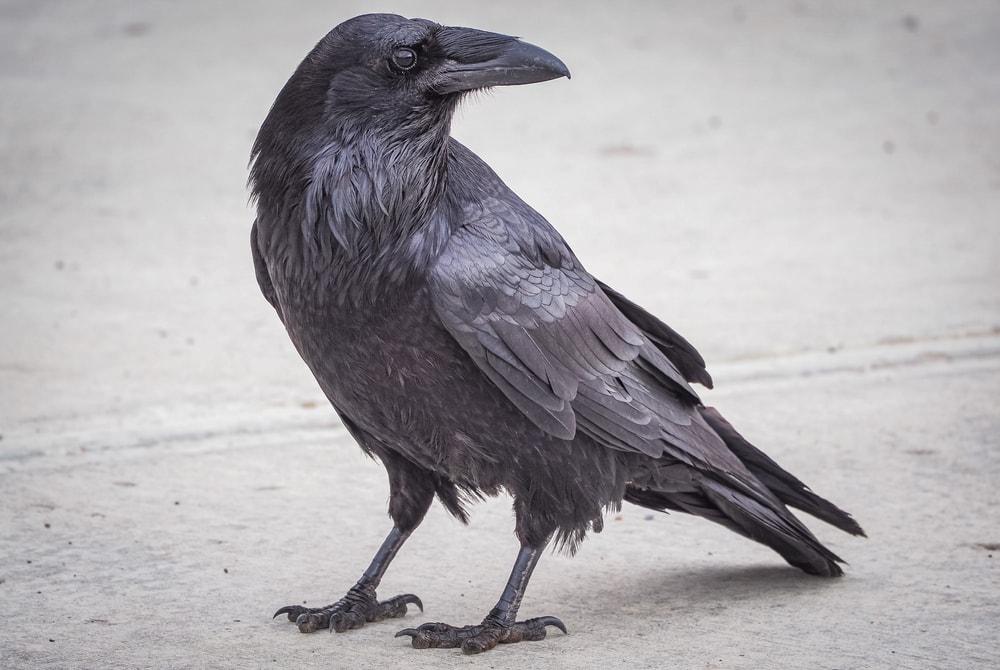
Corvidae family birds have bristly-feathered nostrils, strong beaks, and large wingspans. They are large or very large birds. They only molt once a year. Males and females are similar in size and appearance.
The Corvidae family includes crows, magpies, ravens, jays, and jackdaws.
Corvus bird species include the Pied Crow, Common Raven, White-necked Raven, and Chihuahua Raven. Most are dark in color. They are classified based on DNA and geographical distribution rather than morphology. Morphology is the size, shape, and structure of a living organism.
The White-necked Raven (C. albicollis) below is a member of the Corvus genus.
You May Also Like: 23 Types Of Vultures: Nature’s Clean-Up Crew
Why Are Ravens Able to Talk?
Ravens have a similar brain structure to parrots and humans. Ravens have a cerebellum and a cortex in their brains. They also have several physical characteristics that enable them to talk.
Cerebellum and cortex
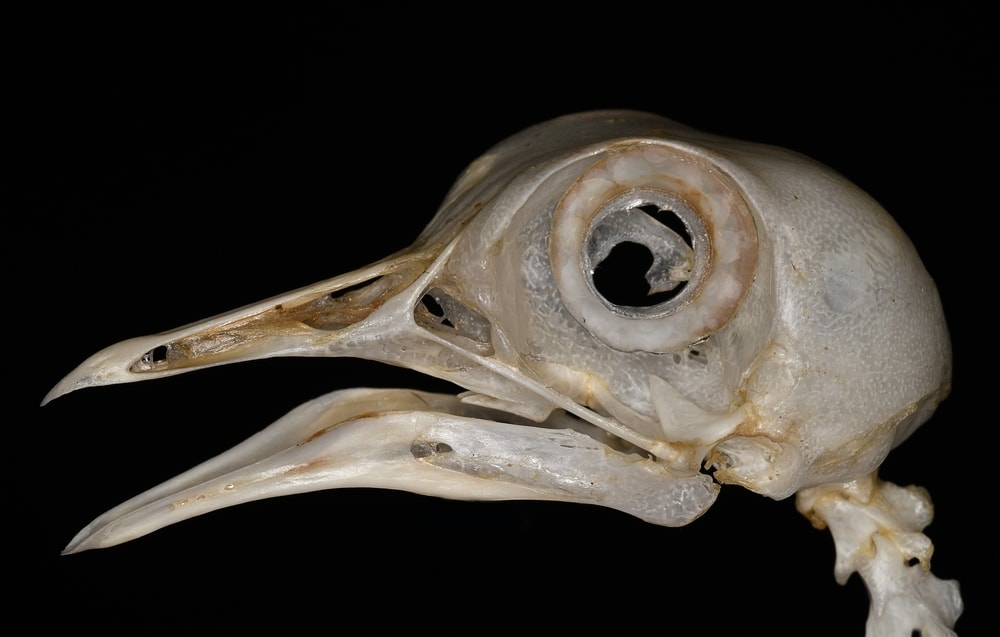
The cerebellum enables voluntary motor functions, such as talking. The cortex enables memory, perception, language, and sensory information.
These two parts of the brain are connected with the medial spiriform, which is a neural circuit. As they have this connection, ravens and parrots can communicate, talk like humans, and mimic words and phrases.
Syrinx
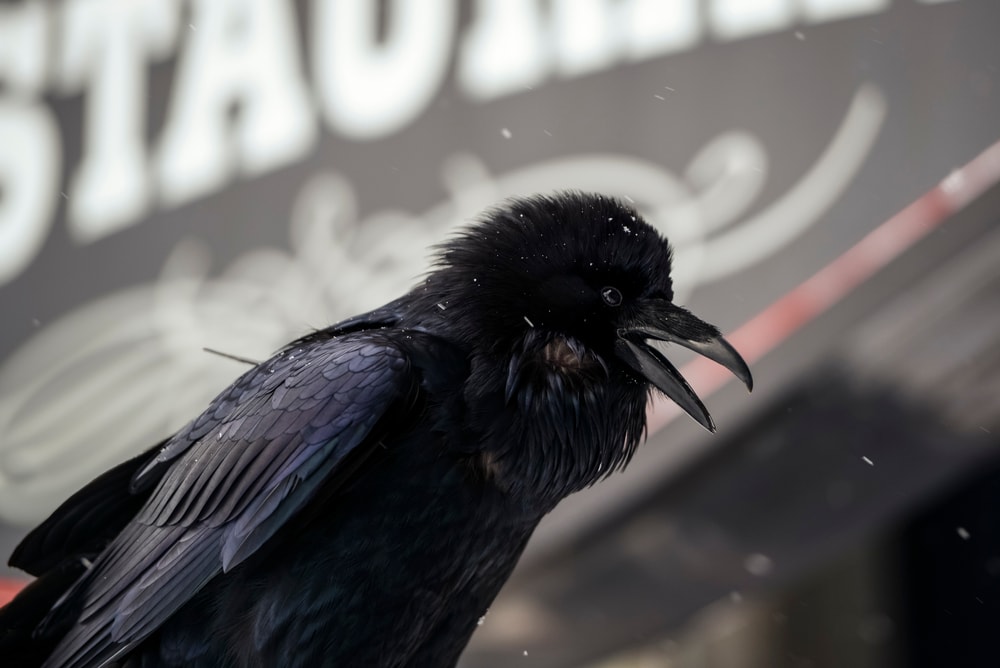
Ravens don’t have teeth, lips, or a larynx (a voice box) like humans do. So, how can they speak like us?
The answer lies in the syrinx, a fluid-filled organ in their chests. This is made up of two parts. A raven can move each part independently. They can create sound by pushing air through the syrinx using the muscles and valves around it.
Most birds have a syrinx. It’s the way the syrinx is developed in birds such as ravens that makes them able to talk.
Tongue and beak
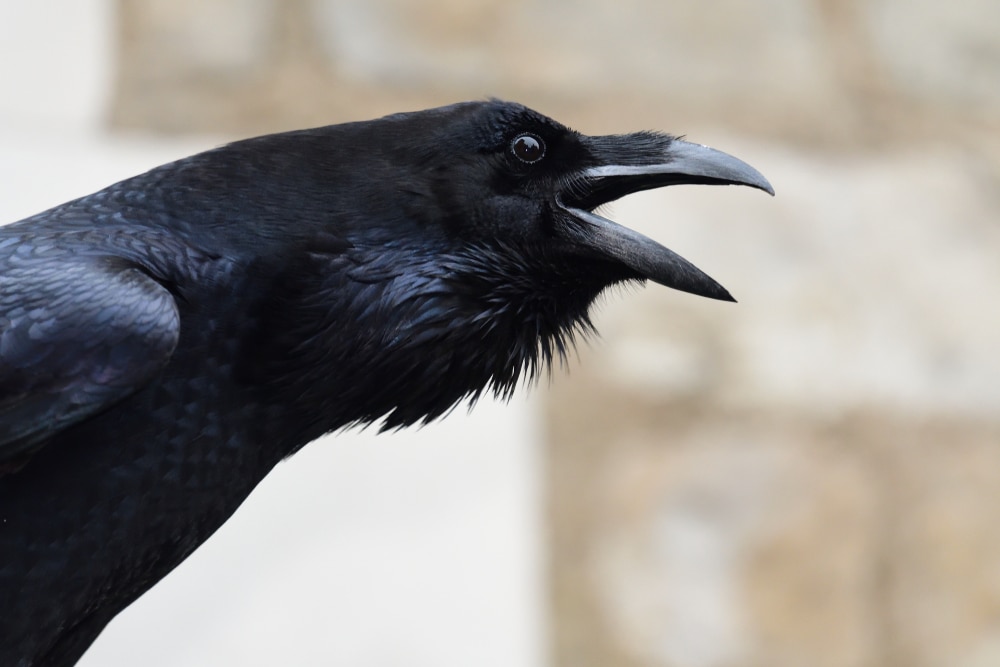
Birds can change the frequency of sounds by using their tongues. This is called lingual articulation. Ravens also use their beaks to shape sounds.
What Sounds Can a Raven Make?
Ravens can easily learn to say simple words like “hi” and “hello.” What’s more, a raven can speak entire phrases. This only happens when a raven is in close contact with humans.
In the wild
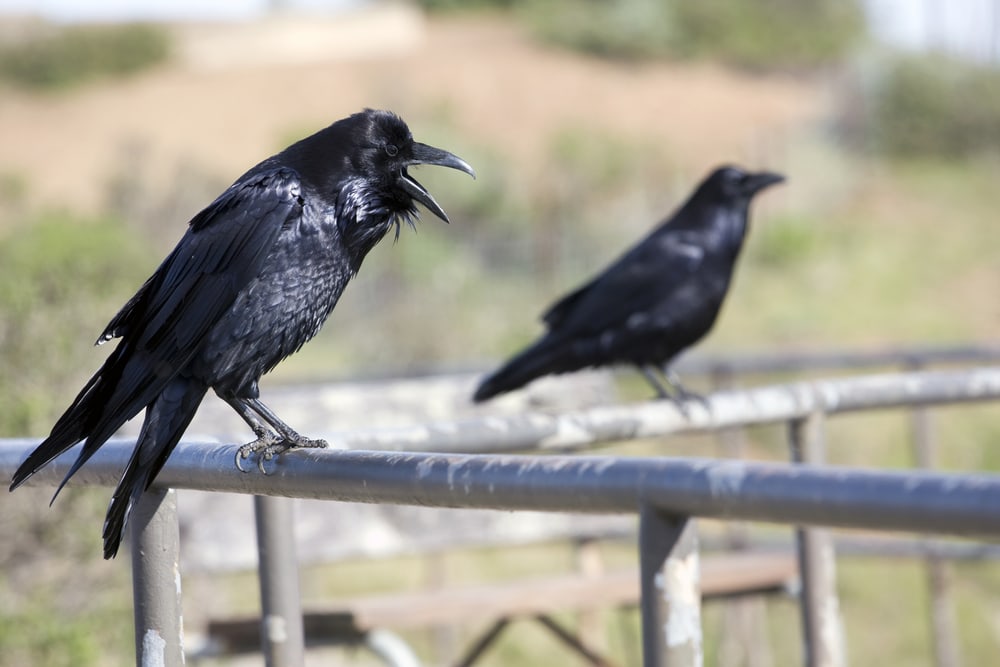
In the wild, ravens make 33 different categories of vocalizations. Here are just some of them:
- The most common is the “gurgling croak,” which rises in pitch. This sound carries for more than a mile. Ravens make it in response to other raven calls. So they use it to contact other ravens.
- When fending off intruders or predators, ravens make brief, shrill calls.
- A dominant female raven makes a knocking sound that lasts for about 12 knocks.
- Deep, rasping noises mean a raven’s nest is being disturbed.
- Mimicry of other bird calls is common, too.
To hear these vocalizations and other fascinating raven calls, visit the Macaulay Library here.
In captivity
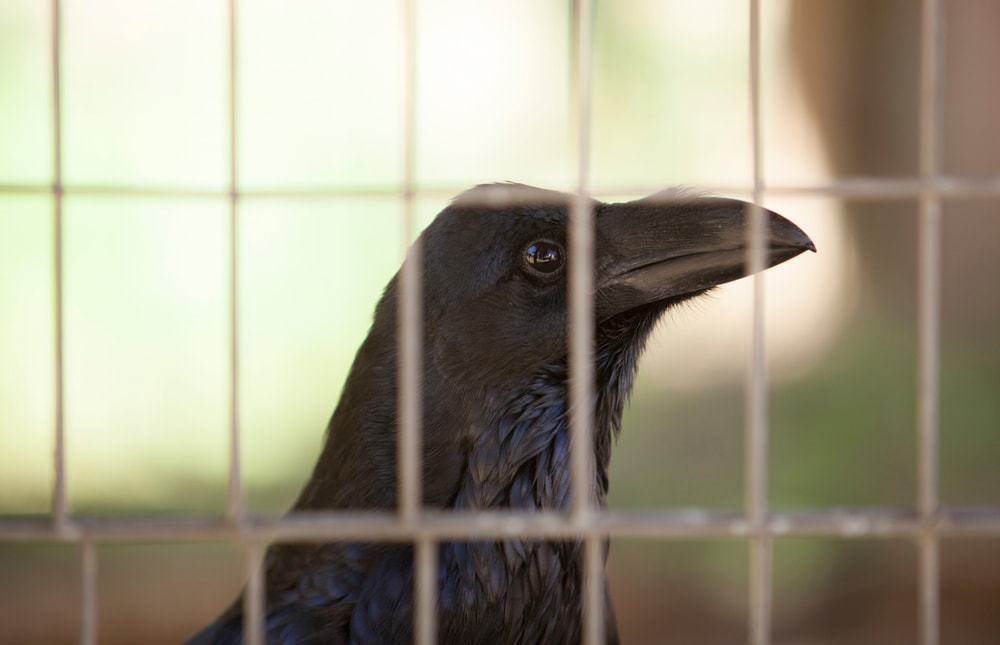
Captive ravens can mimic around 100 words accurately. They sound different from parrots because their beak shape is different.
Parrots have a curved beak, while ravens have a straight beak. This affects the types of sounds they can make.
Here are some of the words and sounds ravens can make:
- “Hi” and “Hello”
- ‘‘Nevermore”
- “Hey, you there” and “hey now”
- Car alarm sounds
- Dog barks
- Sirens
- Beeping noises
- Coughing
- Swearing
- Humming and singing
Female raven “Fable” is the subject of many “Falconry and Me” videos on YouTube. She sings and even swears. Her owner puts a hidden camera in her aviary to capture her natural vocalizations.
You can see and hear Fable here.
You May Also Like: 22 Types Of Hawks, Legendary Birds Of Prey : Pictures + Facts
How Smart is a Raven?
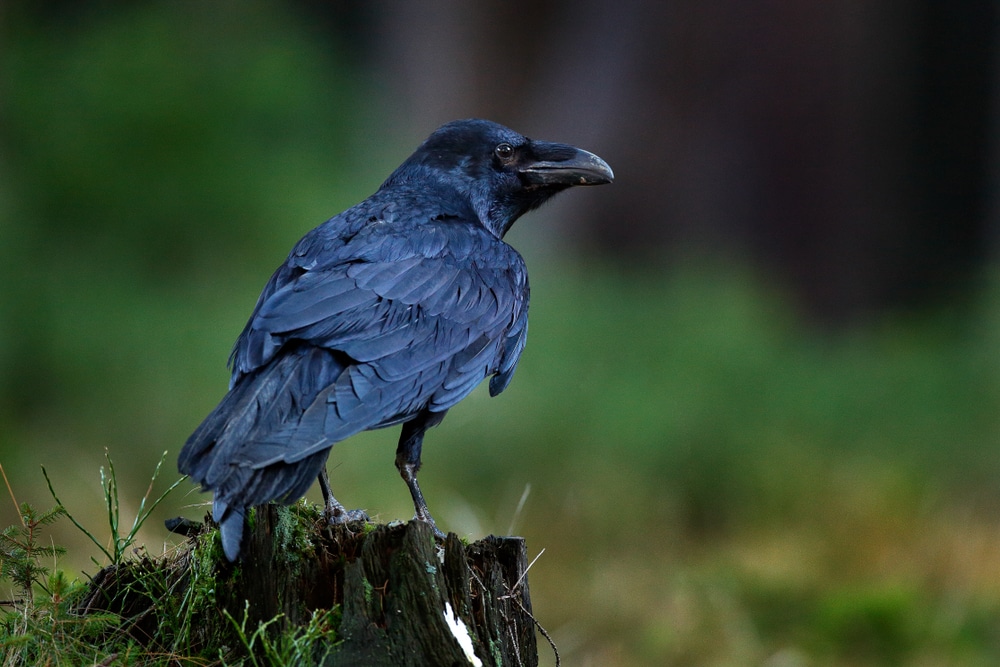
Ravens have been found to be as intelligent as a 7-year-old child. They are excellent at solving problems, such as how to get at food that has been hidden or enclosed in something. Researchers have carried out many experiments with members of the Corvid family.
All corvid species are known to be intelligent.
Cognition Equal to Great Apes
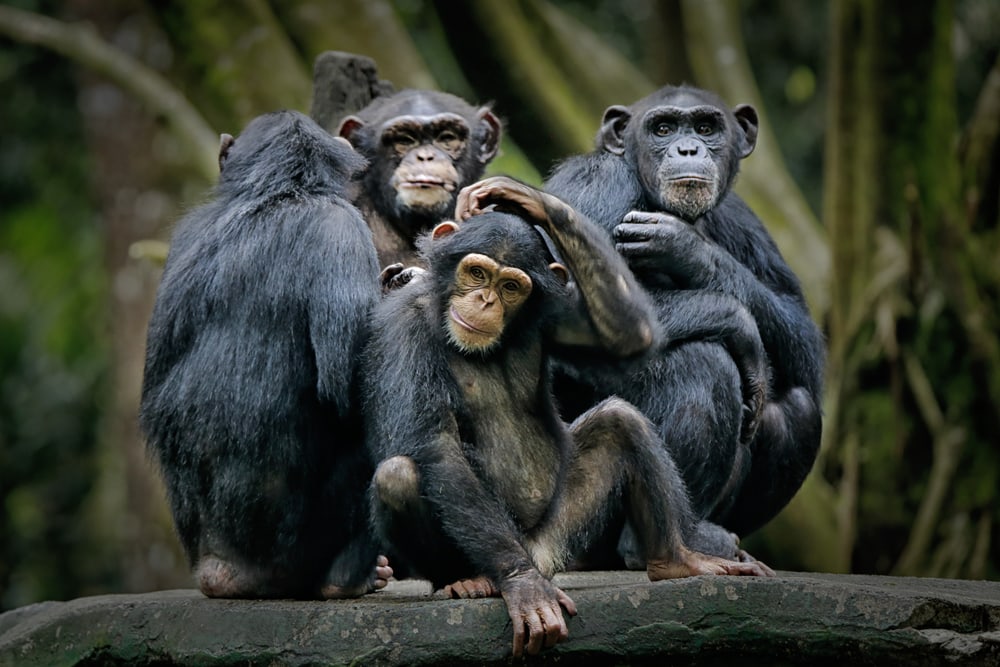
Simone Pika, a cognitive scientist at Osnabrück University in Germany, carried out research on raven chicks at 4 months of age. She gave the young ravens nine physical cognition tests and six social cognition tests at 4, 8, 12, and 16 months of age.
She found that ravens just 4 months old performed equally well as great apes such as chimpanzees in all the tests. This is roughly akin to the level of a 2.5-year-old child.
In fact, a 2.5-year-old child would beat a raven in a social cognition test, but a raven chick would beat them in physical cognition tests.
Bran’s Problem-Solving
Lloyd Buck’s 11-year-old raven Bran displayed Corvid cleverness live on the BBC’s Springwatch program.
He was given the task of getting food out of a clear box. The food was on the end of a long string inside the box. The box had only one weak point: a circle covered in paper. Bran had never seen this particular problem before. Within minutes, Bran had pecked out the circle and pulled all the string out to get at the food.
Another task had seven stages. Within seconds, he had completed them all and reached his prize. You can watch Bran in action below.
Elias’s Tactical Deceit
Four-year-old Austrian raven Elias has shown a strategy for hiding food from other birds. He fools the other bird into thinking he is making a cache to bury food, but actually he still has it in his throat pouch. He then hides it somewhere else.
He is able to predict what another bird’s next move will be, a strategy researchers say is rarely witnessed in the animal world.
Elias will also pretend to bury food, then use his activity as cover to steal food from another bird. His stealing, bluffing, and creativity have shown he has a high level of intelligence. Together with a low level of morality.
Cracking Nuts
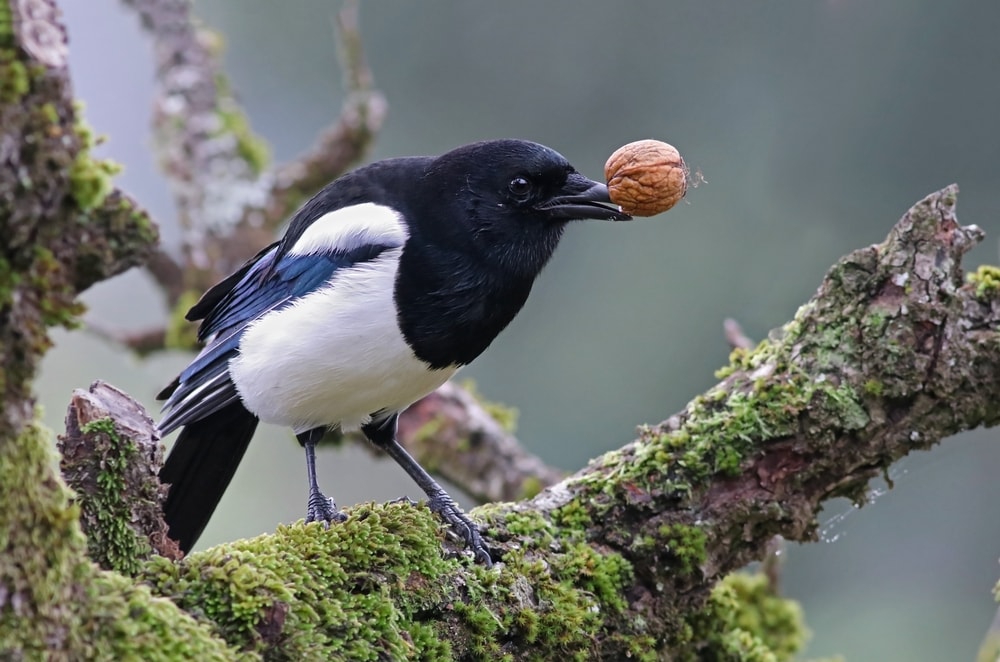
In the wild, corvids have many cognitive problems to solve. This Eurasian Magpie is working out how to crack the shell of this walnut. Corvids will use tools such as flat rocks to smash open the shell.
Famous Ravens in Art and Literature
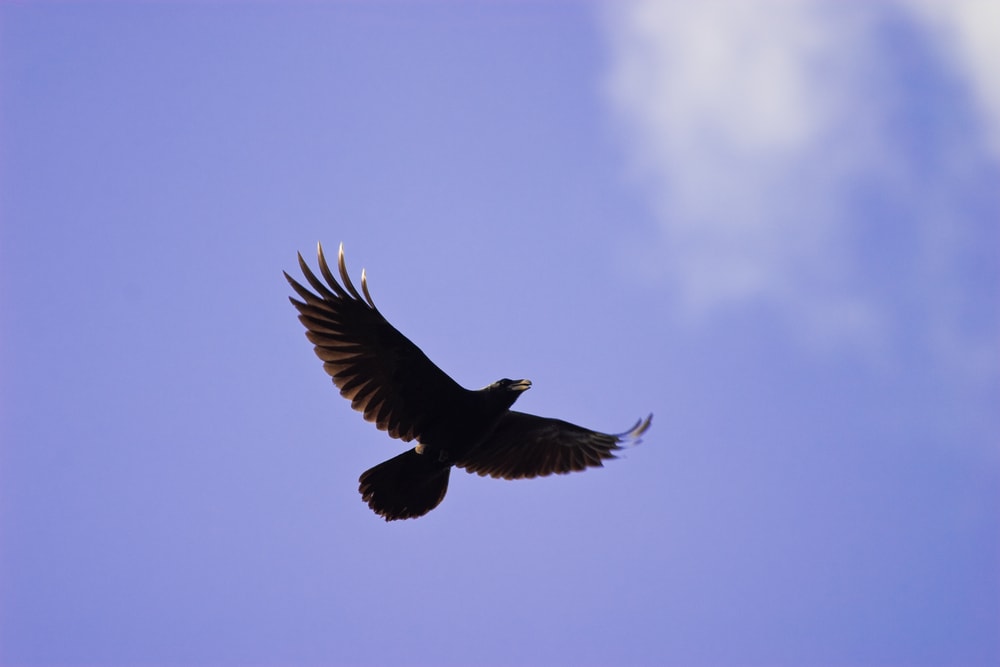
Ravens have long held sway in the popular imagination. They are portrayed many times in great works of art and literature.
- Edgar Allen Poe’s gothic poem “The Raven” was published in an anthology of Poe’s poems in 1845. The raven knocks on the door of the man and croaks the now-famous word “Nevermore”.
- Neil Gaiman uses talking ravens in his Sandman graphic novels. These depict the dream world intersecting with reality. One of the ravens, Matthew, used to be a human before he died and became a raven servant of the Dream Lord.
- In Vasily Vereshchagin’s Apotheosis of War (1871), crows or ravens perch on a pile of skulls.
- John William Waterhouse’s The Magic Circle, from 1886, shows a witch casting spells. A group of ravens watch her intently as her familiars.
- Charles Dickens owned three pet ravens. All of them were called Grip. He featured a raven called Grip in Barnaby Rudd, his fifth novel.
John William Waterhouse is famous for painting “The Lady of Shalott.” This painting depicts the legend of the young woman who commits suicide after her lover deserts her.
Ravens in Mythology
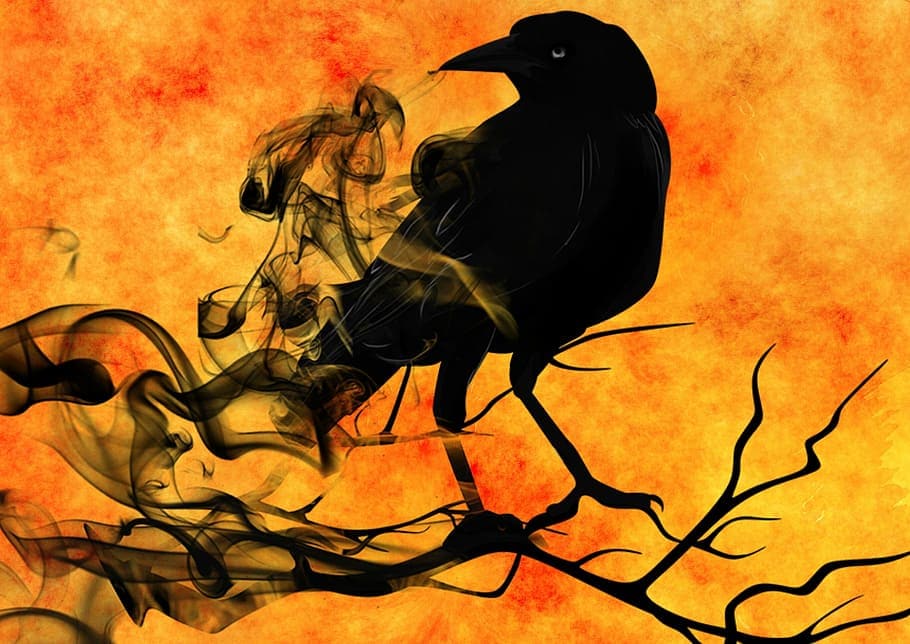
In Norse legend, Odin, the god of war, had two ravens, Huginn And Muninn. Their names translate as “Thought” and “Knowledge.” They flew all around the world, bringing back knowledge to Odin. Ravens were associated with war as they are carrion birds.
Crows and ravens also accompanied the Welsh Celtic goddess of war, the Morrigan.
First Nation Native Americans have many tales of the raven as a trickster god. Raven is depicted as a trickster, but he uses his skills for good. He steals fire for the people to use and invokes the wrath of the Sun God.
The Tlingit and Haida people of the Pacific Northwest craft Raven into their totems and house poles.
When Cain slew Abel in the Christian Bible, a raven showed Cain how to bury the body.
Ravens and crows represented augury and divination in Greek myth. They are associated with Apollo, the god of war.
You May Also Like: Are Birds Mammals? The Difference Between Feathers & Fur
Fun Facts About Ravens
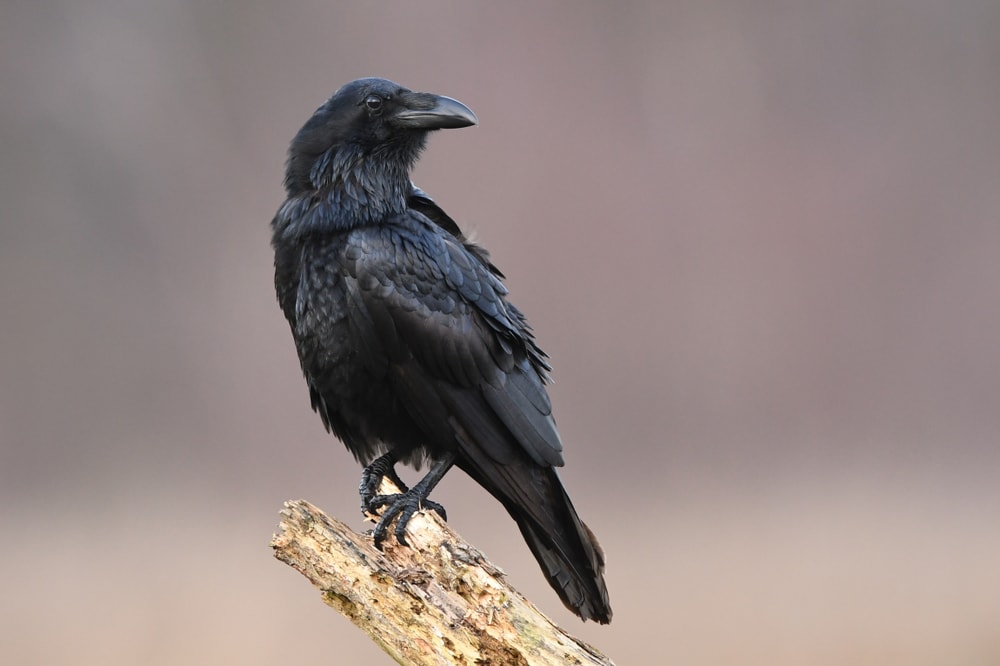
- Both the male and female ravens help build their nest.
- In the wild, ravens live from 10 to 15 years old. In captivity, they can live up to 40 or 50 years. One report tells of a raven that lived to be 80, although this is not substantiated. The oldest wild raven lived to be 22.
- A raven’s brain is the size of a walnut and takes up 1–1.5% of their body weight. A human’s brain is 2–2.5% of their body weight.
- Raven eggs are a dull greenish blue color with brown spots.
- Ravens eat berries, eggs, and small mammals in the wild. They will go in a group to raid seabird nests, eating eggs and chicks.
- The common raven is the largest songbird species.
- Ravens are an omen of death in Welsh and Celtic folklore.
Can Ravens Talk FAQs
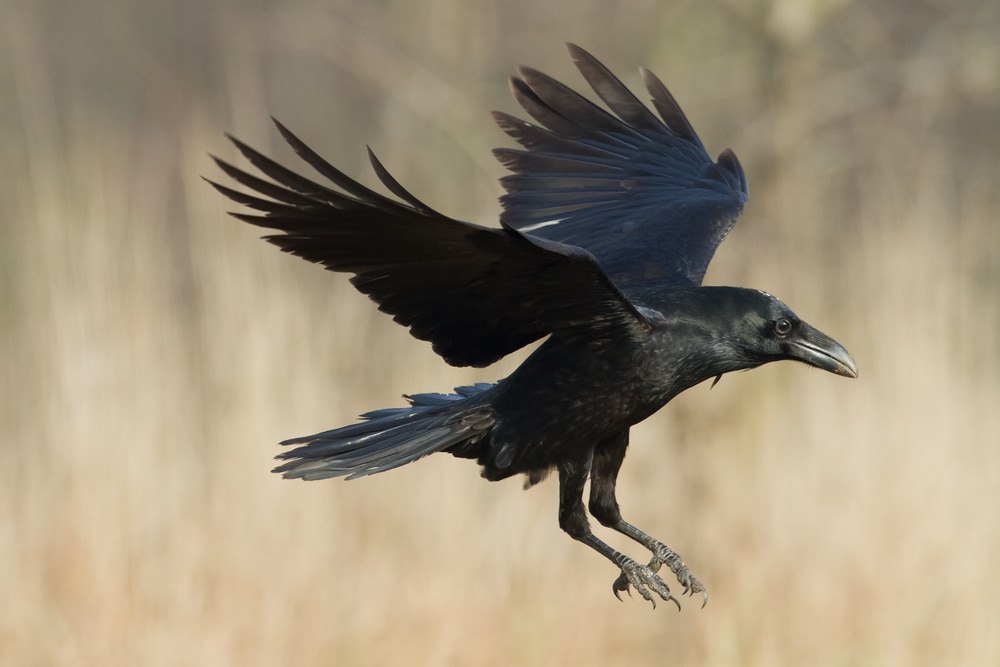
How can you tell a raven and a crow apart?
Ravens are larger than crows. Their beak is more curved and heavier. They soar like birds of prey rather than flapping their wings like crows.
Ravens have more slender wings and a wedge-shaped tail with longer feathers in the middle. A crow’s tail is fan-shaped, as all the feathers are the same length. Ravens travel in pairs, while crows travel in larger groups.
Are ravens related to parrots?
Ravens are not related to parrots.
Parrots are from the order of birds known as Psittaciformes. Ravens are from the order Passeriformes (perching birds). They have similar abilities to speak because of the way their syrinx is developed, but this is coincidental.
Which is smarter, a raven or a parrot?
Ravens and parrots have different types of intelligence. Parrots have a better memory and can mimic words and phrases better than ravens. However, ravens can solve problems and predict what another animal is going to do next.
Do ravens play?
About 25 bird species, including ravens and other corvids, have been observed playing. This is defined as “activities without purpose.” Such as crows riding a snowboard or sneaking up behind each other to peck each other’s tail feathers.
Where can I find ravens?
The common raven has an enormous range. It is found across the Northern Hemisphere in Eurasia and North America, as well as in South America and North Africa. Its preferred habitat is woodland and forest. It is found in desert and arctic areas but is much less common.








